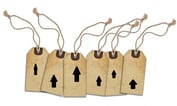This is an extended version of the article that appeared in the February 2013 issue of Investment Advisor.
Just a few days before Hurricane Sandy barreled up the East Coast, German reinsurance giant Munich Re issued a new report titled “Severe Weather in North America” revealing that, despite notable recent events such as epic flooding and wildfires in Australia and the inundation of whole regions of Asia by rain, weather disasters have hit North America far harder than they have the rest of the world. Citing data that revealed a fourfold increase in natural catastrophes in North America since the early 1980s, the report focused not just on the damage such storms wreaked and its cost, but also on the need to change both insurance and mitigation strategies.
Advisors might want to check it out and then have another look at their clients’ assets—not just portfolio holdings, but businesses and residences as well. Otherwise, changes in both underwriting and mitigation strategies could end up sending clients down different paths in ways neither you nor they have anticipated, both in the handling of their businesses and in their choices for residential and vacation properties.
Advisors with clients on the East Coast of the United States are already familiar with the increasing difficulty of finding coverage for homes and businesses in the path of hurricanes, spurred by the onset of Hurricane Andrew in 1992. The Gulf Coast in particular has seen its share of hardship caused by hurricanes, and insurers have felt the pain as well. According to the report, “Underwriting windstorm risk in the Gulf of Mexico in recent years has been a very volatile process […]. Underwriting windstorm insurance in the Gulf of Mexico has been an exercise in capital destruction over the last 10 years.”
The report also noted, “Natural catastrophe losses for personal lines in the United States have risen dramatically in recent years, largely due to socioeconomic changes that have increased loss potentials.” With a population heading either south or toward the coast, more and more people are in harm’s way from massive thunderstorms and from the hurricanes that plague the East Coast with increasing fury.
The migration has been so massive that “[o]ver 50% of the U.S. population now lives in counties directly on the coast where they are vulnerable to powerful winter storms or hurricanes […]. Extensive suburban and exurban sprawl […] has essentially created more ‘targets’ for natural events to potentially hit. Rising home and personal property values over this time period have also contributed to increasing catastrophe losses.”
So it’s hardly surprising that reinsurers should be considering all the ramifications of such increases with an eye toward control. And after defining the terms of the studies, that’s what the report dealt with.
Munich Re classified natural perils, nearly all of which are increasing in frequency, into nine categories: winter storms, tropical cyclones (hurricanes), thunderstorms, inland floods, landslides, subsidence and heave, heat waves and droughts, wildfires, and natural perils in Canada—a whole separate category. Earthquakes and volcanic eruptions and the landslides they cause, which are not on the increase, are not included in these perils.
Risks were categorized as climate variability and change, exposures and vulnerability. The report pointed out that socioeconomic change has contributed substantially to the increase in weather-related events, thanks to the growing density of population in both urban areas and areas prone to atmospheric hazards. However, it also said that the increasing frequency of weather events—thanks in part to anthropogenic climate change, which has affected regional and local climate—has also had an impact on the escalation of risk.








 January 21, 2013 at 07:00 PM
January 21, 2013 at 07:00 PM










